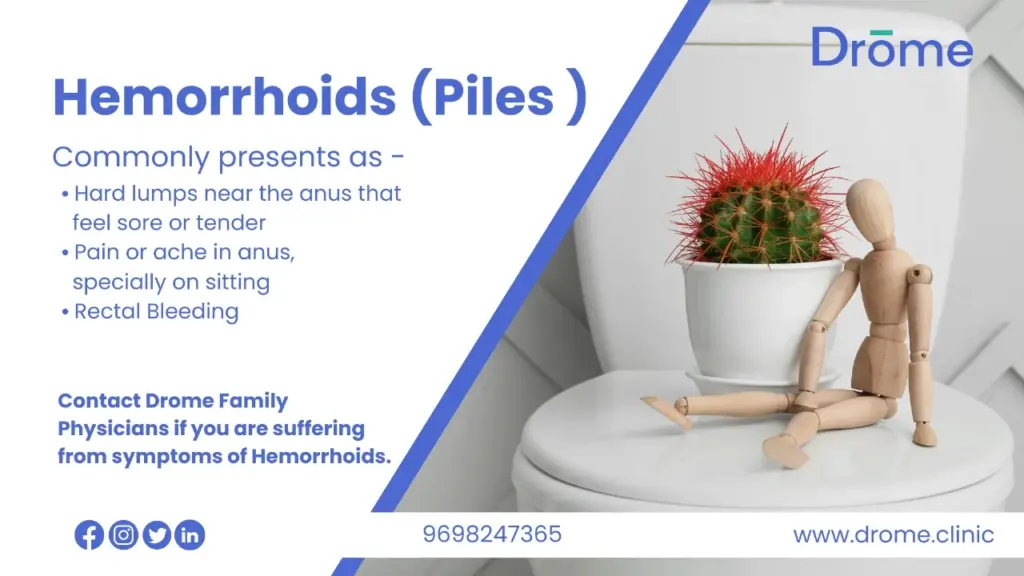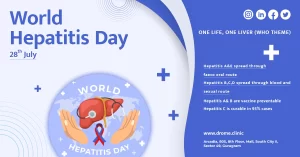Hemorrhoids: A Common Yet Misunderstood Condition
Hemorrhoids, often known as piles, are a condition hardly discussed openly, yet they affect a significant portion of the population. This brief exploration into hemorrhoids aims to demystify the condition, shedding light on its risk factors, types, symptoms, causes, and treatment.
Who Might Get Hemorrhoids?
Anyone can get hemorrhoids, even teenagers. Factors contributing to higher risks include:
- Pregnancy
- Chronic constipation or diarrhea
- Being overweight
- Regular heavy lifting
- Lack of fiber in one’s diet
- Strain while having bowel movements
Types of Hemorrhoids
Hemorrhoids are of two main types—internal and external, based on their location.
- Internal hemorrhoids lie inside the rectum and usually can’t be seen or felt, and are less likely to be painful.
- External hemorrhoids form under the skin around the anus and can itch or bleed when irritated.
- Prolapsed: Both internal and external hemorrhoids can prolapse, meaning they stretch and bulge outside of the anus. These hemorrhoids may bleed or cause pain.
Hemorrhoids vs. Anal Fissures
It’s important to differentiate between hemorrhoids and anal fissures, as they can produce similar symptoms but require different treatments.
An anal fissure is a small tear in the lining of the anus, often caused by passing a hard stool. Unlike hemorrhoids, which are swollen veins, fissures are characterized by sharp pain during bowel movements, followed by prolonged burning.
Causes of Hemorrhoids
The primary cause of hemorrhoids is increased pressure in the lower rectum, which can dilate the blood vessels in the area.
This pressure might result from :
- Straining during bowel movements
- Sitting for long periods
- The increased weight of pregnancy on the veins.
Symptoms of Hemorrhoids
Internal hemorrhoids rarely cause pain (and typically can’t be felt) unless they prolapse. There might be blood on toilet paper, in the stool or in the toilet bowl.
External hemorrhoids can present with:
- Itchy anus
- Hard lumps near your anus that feel sore or tender
- Pain or ache in your anus, especially when you sit
- Rectal bleeding
How are hemorrhoids diagnosed?
Hemorrhoids are diagnosed based on symptoms and a physical exam. Your doctor might be able to see external hemorrhoids.
- Digital rectal exam: Feeling for swollen veins by inserting a gloved, lubricated finger into the rectum.
- Anoscopy: Viewing the lining of anus and rectum by anoscope (lighted tube).
- Sigmoidoscopy: To view inside the lower (sigmoid) part of colon and rectum by using a sigmoidoscope (lighted tube with a camera)
Managing and Preventing Hemorrhoids
Hemorrhoids often go away on their own without treatment. Symptoms like pain and bleeding may last one week or slightly longer. Some useful measures for management of hemorrhoids at home-
- Drink more water.
- Increase fiber intake through diet and supplements.
- Soak in a warm bath (sitz bath) for 10 to 20 minutes a day.
- Soften stool by taking laxatives.
- Take nonsteroidal anti-inflammatory drugs (NSAIDs) for pain and inflammation.
- Use topical treatments: Apply a hemorrhoid cream available over the counter
In more severe cases or non resolving cases, procedures like
- Rubber band ligation
- Sclerotherapy
- Surgery might be necessary.
Complications
Complications of hemorrhoids are rare but may include:
- Anemia: ongoing blood loss from hemorrhoids may cause anemia. Anemia is when there aren’t enough healthy red blood cells to carry oxygen to the body’s cells.
- Strangulated hemorrhoid: When the blood supply to an internal hemorrhoid is cut off, the hemorrhoid is called strangulated. Strangulated hemorrhoids can cause extreme pain.
- Blood clot: Sometimes a clot can form in a hemorrhoid. This is called a thrombosed hemorrhoid. Although not dangerous, it can be extremely painful and sometimes needs to be drained.
Conclusion
Though common and often uncomfortable, hemorrhoids are usually manageable with the right care and lifestyle adjustments. Understanding the condition, its types, symptoms, and causes can help individuals seek appropriate treatment and make preventive measures to reduce the risk of hemorrhoids developing or worsening.
Frequently Asked Questions
Yes, regular exercise can help prevent constipation, reduce pressure on veins, and maintain a healthy weight, thereby lowering the risk of hemorrhoids.
The duration varies; small hemorrhoids may disappear within a few days without treatment, while larger ones might take a couple of months to improve.
Yes, prolonged sitting, especially on the toilet, can increase pressure on the veins in the anus and rectum, contributing to hemorrhoid formation.
#Sourced from Mayo clinic and Cleveland clinic
Contact Drome Family Physicians if you are suffering from symptoms of Hemorrhoids.




